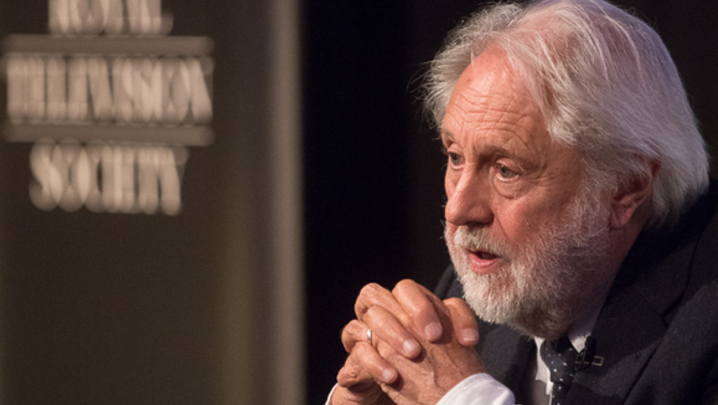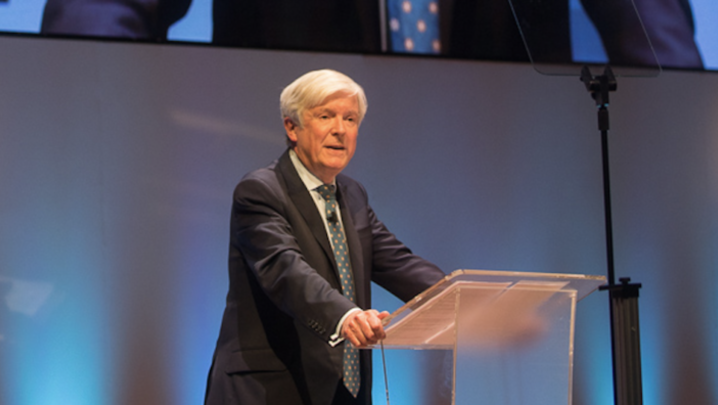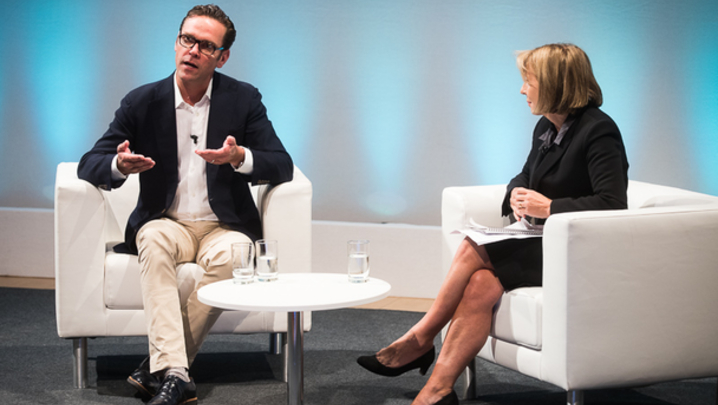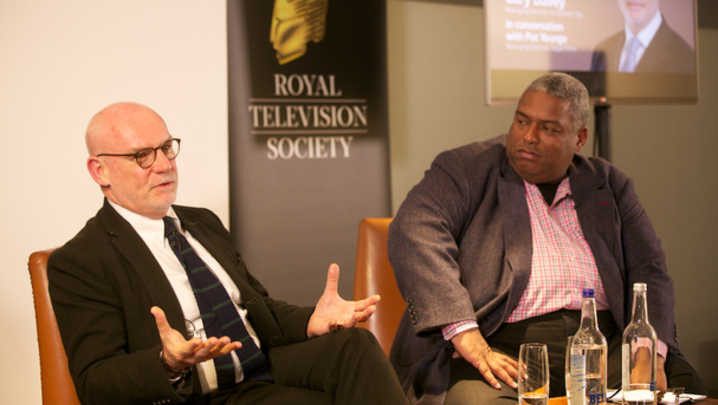Digital UK CEO Jonathan Thompson sets out his plan for how the British TV industry should respond to the rise of the FAANGs
Our reaction to a major change of any kind usually goes in phases…
Avoidance (“I’m not going to look”)
Denial (“I’ve looked but I don’t believe it”)
Fear (“We’re doomed”)
Panic (“I just need to do something”)
Response (“Ok – maybe there is something practical I can do”)
Acceptance (“Well that wasn’t so bad”)
British TV has been fairly consistent in following this pattern when it has faced transformative change in the sector in the past.
Remember the early days of digital TV in the late 1990s? The four/five channel monopoly that had underpinned TV advertising and the licence fee for decades was exposed for the first time to unconstrained distribution. Everybody in the country would have access to hundreds of channels – free or paid for. This was the inevitable end to mass market free-to-air broadcasting.
And the reaction was predictable. The early phase of denial (“Why would anyone want more than three or four channels?” asked the bigwigs of British TV when Sky launched in the UK). Then panic, in terms of a mistaken belief that the answer to the emergence of pay-TV in the UK was to launch the same business model (witness ONdigital), then finally acceptance and response.
The correct response to the end of analogue was the realisation that UK broadcasters needed to embrace it and simply get better at what they were already doing. This meant expanding channel portfolios; an enhanced and more targeted content offering; and promoting the continued merits of mass-market TV advertising.
But the next wave facing us is very different to the move from analogue to digital and will be defined by four interconnected themes:
- The growing ability of content aggregators to bypass traditional broadcast networks by distributing AV content reliably over the internet to the mass market.
- The ability to monetise investment in content to a global audience rather than relying primarily on the return from a national market, dramatically changing the economics of content investment (and perhaps making TV production much more like film production).
- The ability of global online players to see their entry into TV and the benefits it offers as a loss-leading activity, rather than the standalone investment decision faced by incumbent broadcasters.
- And finally, the relentless desire and expectation of consumers to want ever greater choice, flexibility and quality in their TV consumption.
This is a powerful combination of factors happening at the same time. It is without doubt far more profound in the long-term than the shift from analogue to digital.
The reaction to these themes – which have only really emerged over the last five years – has been predictable. At first the impact was small, and easy to ignore or dismiss. Then as it grew we moved to denial, able to convince ourselves that it wouldn’t really be an issue because “Silicon Valley doesn’t really get how TV works”.
To be fair there was quite a lot of evidence from their first forays into television to argue the major Silicon Valley players didn’t really understand it. They simply saw so many flaws in how TV worked that they just concluded it had to be made like the internet. Anybody who remembers Joost or the early launces of Google TV and Apple TV witnessed what happens when you try to turn television into the world wide web.
Now Silicon Valley is learning, and learning fast.
It would be a fool who would now argue that Netflix doesn’t get TV. If we are honest, they are now setting the standard as innovators. Amazon is not far behind and Apple - after many failed attempts - is recognising the need to hire the right creative TV talent and embrace the TV brands people love. YouTube remains something of a punky upstart, but the go-to destination for younger audiences.
Not all the so-called ‘FAANGs’ (Facebook, Apple, Amazon, Netflix, Google) may succeed, but some will. And when they do the transformation of the whole TV value chain will be like nothing we’ve seen before.
So how does the UK television sector respond? Well the obvious first point is don’t panic. The Silicon Valley players’ actual direct impact on TV consumption today is relatively small. Viewing is increasingly hybrid but broadcast television still accounts for the majority of viewing for most people. Bake Off and Blue Planet still mean more to the TV audience at large than The Crown and Stranger Things. And so far, Netflix and Co are largely focussed on a steady output of high-end drama and sensationalist docs….a hamburger diet which leaves you feeling full but somehow never fully nourished.
To respond effectively, there are four areas in which the UK TV industry needs to act now:
- Collaboration is crucial – Ofcom recently called on the PSBs to “work more collectively together strengthen their negotiating hand”. Collaboration is easy to say but hard to do. There are already good examples in areas such as ad sales and joint ventures like Freeview but our biggest broadcasters will need to be even bolder in this area to realise the scale and competitive edge required to meet the coming challenge.
- Learn don’t copy – Just as ONdigital wasn’t the answer to Sky, the answer to the growth of Netflix has to be more ambitious than a me-too version of Netflix. Just as Silicon Valley players are starting to learn about TV, we need to make sure we learn from them on the new skill-sets they bring in new models of monetisation and how to use data effectively.
- Know what you’re good at – The UK broadcasters responded to the growth of multichannel by being better at what they already did. Now’s the time to once again leverage their existing strengths. Nurturing the best local creative talent; making high quality British content aimed at local audiences but with global appeal; no commissioning algorithm is ever going to take the creative risk of a Happy Valley or Detectorists.
- Argue for the right policy outcomes, not regulatory protection – The temptation of any sector facing such change is to seek the protection of the government or regulator, but protectionism is rarely a strategy that works. However, there are important policy areas that these changes bring into sharp focus: universal and prominent access to British content and local programming; choice of impartial and high-quality news; diversity of creative talent amongst many others. These are important debates that needs to happen now if we are to safeguard these benefits while continuing to benefit from market innovation.
We are in a new phase. The polarised debate between those who believe “TV is already dead” and those who sleep soundly believing that the Silicon Valley giants are stumbling fools needs to stop. Now is the moment to move beyond ignorance, avoidance or panic and focus instead on a strategic response, marshalling our sector’s formidable combined strengths to support a hybrid model – the best of free TV plus your choice of SVOD – a more flexible, more affordable and more open choice for viewers.
Jonathan Thompson is CEO of Digital UK









